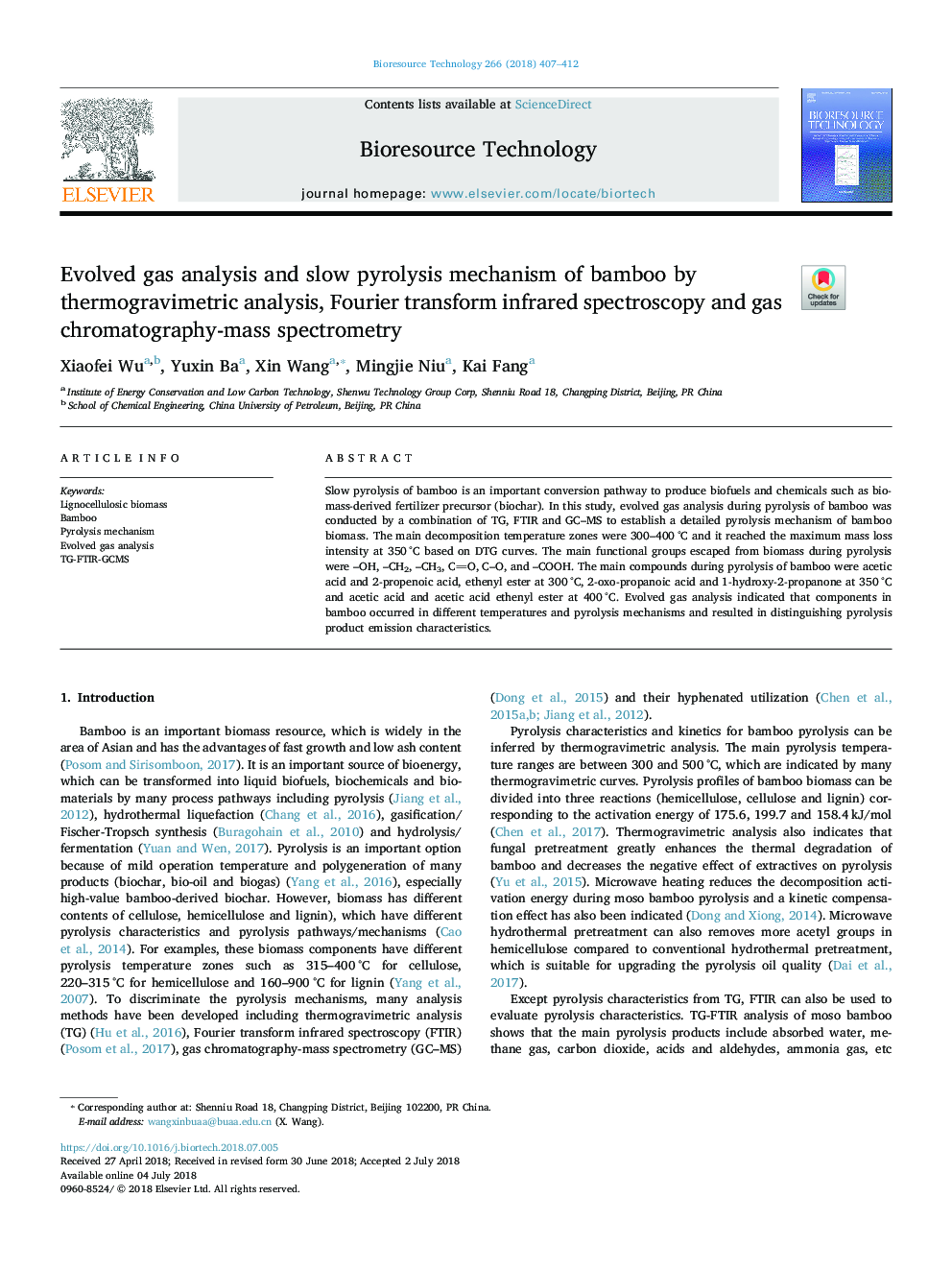| Article ID | Journal | Published Year | Pages | File Type |
|---|---|---|---|---|
| 7066139 | Bioresource Technology | 2018 | 6 Pages |
Abstract
Slow pyrolysis of bamboo is an important conversion pathway to produce biofuels and chemicals such as biomass-derived fertilizer precursor (biochar). In this study, evolved gas analysis during pyrolysis of bamboo was conducted by a combination of TG, FTIR and GC-MS to establish a detailed pyrolysis mechanism of bamboo biomass. The main decomposition temperature zones were 300-400â¯Â°C and it reached the maximum mass loss intensity at 350â¯Â°C based on DTG curves. The main functional groups escaped from biomass during pyrolysis were -OH, -CH2, -CH3, CO, C-O, and -COOH. The main compounds during pyrolysis of bamboo were acetic acid and 2-propenoic acid, ethenyl ester at 300â¯Â°C, 2-oxo-propanoic acid and 1-hydroxy-2-propanone at 350â¯Â°C and acetic acid and acetic acid ethenyl ester at 400â¯Â°C. Evolved gas analysis indicated that components in bamboo occurred in different temperatures and pyrolysis mechanisms and resulted in distinguishing pyrolysis product emission characteristics.
Related Topics
Physical Sciences and Engineering
Chemical Engineering
Process Chemistry and Technology
Authors
Xiaofei Wu, Yuxin Ba, Xin Wang, Mingjie Niu, Kai Fang,
